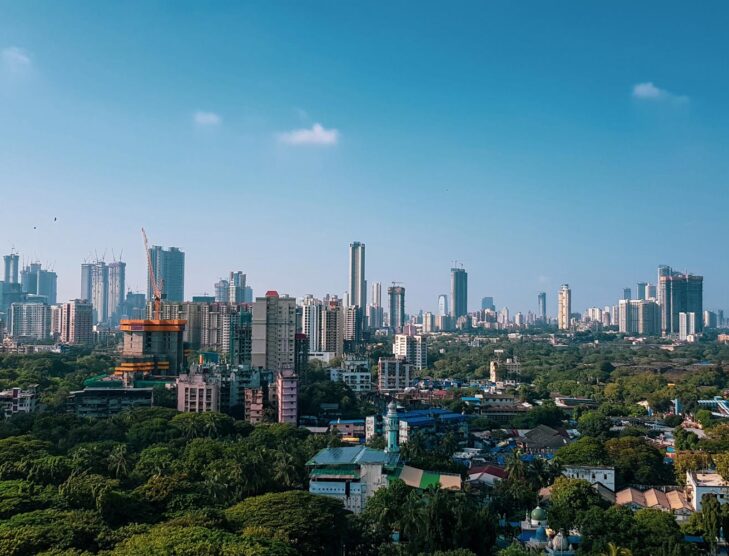
India’s new chemical regulation expected to be finalized soon
The latest iteration of India’s proposed chemical regulation called Chemical Management and Safety Rules (CMSR) adopts many of the same principles and concepts as Europe’s REACH, which was introduced to protect humans and the environment from the risks posed by harmful chemicals. The Registration, Evaluation, Authorisation and Restriction of Chemicals (REACH) is a European Union (EU) regulation dating back from December 18, 2006. The fifth draft of India’s proposed chemical regulation was circulated on August 24, 2020.
CMSR will supersede separate existing rules regarding chemical regulations and will replace the existing Manufacture, Storage, and Import of Hazardous Chemical Rules (MSIHC) 1989, and the Chemical Accidents (Emergency Planning, Preparedness, and Response) Rules (CAEPPR) 1996. The proposed chemical rules regulates substances, including in mixtures, in articles, and intermediates, manufactured in or exported to India.
Proposed rule has REACH-like aspects
CMSR is divided into six chapters that include definitions, objectives, and the scope; establishment of a new Indian National Chemical Authority (NCA); and the REACH-like aspects of notification, registration, and restriction on use. Chapter four details safety and accident preparedness requirements — an adaptation of existing regulations applicable to hazardous chemicals which companies manufacturing chemicals in India should already comply with. Finally, there are chapters on labelling and packaging, and miscellaneous requirements.
During a Chemical Watch webinar early this year, Shisher Kumra, executive director at Global Product Compliance (GPC) Group, outlined the latest updates to India’s draft chemical registration — including compliance strategies for Indian and non-Indian companies. GPC is a global regulatory compliance service provider with a presence in Europe, Asia, and the Middle East that has been actively contributing towards the finalisation of India’s chemical regulation and policy.
Kumra advised webinar participants that the next version of India’s CMSR was expected to be circulated before June 2021. Clearly, this timeframe has now passed. However, Dr. Jayachandran Nair, CEO at GPC, recently told F+L Magazine that the entire activity is still expected to be concluded by the end of 2021. The next version of the current draft is likely to be the final CMSR. We do not expect further revision, says Nair.
Roll out of final CMSR
“Based on the internal updates, there is good advancement for roll out of the final CMSR version, which then would be sent to the World Trade Organization (WTO) for notification prior to it getting published in the Indian Gazette,” he says. Previous CMSR drafts were only circulated to select chemical industry bodies in India, not published for wider consultation. During the webinar, Kumra offered insight into developments since version five was released.
There has been significant industry feedback on limitations of the deadlines in the draft, says Kumra. The notification period begins 12 months after the regulation comes into force and allows six months for completion. Any chemicals notified during this initial period will be classed as an existing substance. Industry stakeholders believe the proposed 18-month timeline for registration of the substances listed in Schedule II (Priority Substance List) is inadequate, with all respondents emphasising this point, says Kumra. Some companies have requested a registration period of up to 36 months, he says, which is more aligned with the European REACH legislation. Legislators are contemplating these concerns, and the deadline may be increased from 18 months to 24-30 months from the day the rule comes into force, suggests Nair. This would be based on the consideration that some of the summary end points that must be part of the registration technical dossier may require more testing time at the laboratories.
Intensifying unease around deadlines
Intensifying unease around deadlines is the truth that the NCA and the technology to process registrations need to be established once the regulations are launched, along with the finalisation of a guidance document. This will take at least six months in a best-case scenario, says Kumra.
Additional concerns about the current draft include the required language for safety data sheets (SDS). It is unclear whether the SDS should be provided in English only, English and Hindi, or English, Hindi, and another local language. The final draft should provide clarity on the language of SDS, says Kumra. Kumra also highlighted a lack of clarity on whether polymers will require notification and/or registration. Polymers are not defined within the current draft. Under the current scenario, all polymeric compounds will be considered a chemical substance with compliance obligations within CMSR. GPC has provided inputs for consideration and expects clarification on polymer-related substances in the final version.
While a date for the enactment of the CMSR rules is yet to be finalised, a widely held industry view is that the implementation of the rules should be postponed allowing companies time to recover from the colossal impacts of the Covid-19 pandemic. Nair suggests that the Covid-19 pandemic has already had a bearing on some of the milestones. Whether the impacts of the Covid-19 humanitarian crisis have any further impact on launch timings remains to be seen. The regulations will become active on the date of publication in India’s Official Gazette.
Despite a level of uncertainty, now is the time to begin preparations and improve your understanding of the regulations, says Kumra. The rules will require all Indian manufacturers and Indian importers to comply. Foreign entities need an authorised representative to act on their behalf to submit notifications and registrations to the Indian authority. GPC expects greater transparency on the definition of Authorized Representative (AR) as given in 6(2) of chapter III and, in particular, on the minimum average net worth of the AR in the final CMSR.
Notification won’t be simple nor free
Kumra outlined the format of the proposed NCA. The NCA will comprise three key organs. The Steering Committee will be responsible for administrative and financial functions; the Scientific Committee will screen notified substances and identify those that require full registration; the Risk Assessment Committee will determine whether any further stringency is applicable for certain chemicals based on scientific data and chemical assessments. Eight distinct units will be established for chemistry, toxicology, chemical accidents, packaging & labelling, techno-legal, priority substances, information technology, and socioeconomics.
As per the 5th draft of CMSR, all substances must be notified, even if operators are already complying with other regulations. Though, Kumra notes certain exemption schedules. Unlike pre-registration in Europe, notification is not simple nor free, says Kumra. A mini dossier is required to notify — like a mini registration — and there is a variable fee based on the tonnage band in which you have to notify. Several companies have requested reconsideration of the notification fee which has been deemed “quite expensive”. Kumra stressed the importance of submitting realistic tonnage selections to avoid overpaying. Downstream users are obligated to ensure they are procuring notified or registered substances; otherwise, the downstream user is legally liable.
Despite the effort involved in notifying substances, the advantage is that once notified many substances will not need to complete full registration, says Kumra. Notification of new substances must be carried out at least 60 days before placement of the substance in the market. Every substance notified must submit an annual report within 60 days of the end of the calendar year to provide an update on any new users, information, and changes to tonnage, he says. Although, Kumra notes that the template for annual reporting is currently absent from the draft.
Schedule II sets out registered substances. Approximately 750 existing substances require registration within an 18-month timeframe, says Kumra. Submission of a technical dossier is required, and for quantities exceeding 10 tonnes, a chemical safety report is also mandatory. Registration fees are variable based on tonnage and business size, says Kumra.
Future changes for next version of CMSR

Probable changes in the next version of CMSR include a clear indication as to what information would form part of the Robust Summary — which is section 6 of Schedule VII (Contents of Technical Dossier), the release of tonnage wise data requirements for substance registration along with the test protocol, and the data requirement for priority substances placed in the Indian Territory at volumes of less than 1 ton per year.
All transport isolated intermediates need to be notified; though, if intermediates are priority substances, they require registration, says Kumra. The priority substance definition captures substances that are carcinogenic, mutagenic, and reproductive toxic. Up to 4,700 chemicals may be priority substances based on the defined values, with special labelling and packaging requirements. Priority substances also require notification to authorities 15 days before importation. Some priority substances may require registration and could be categorised as hazardous, says Kumra.
Data from all registrations will be evaluated to assess if substances require further categorisation as hazardous, restrictive, or prohibitive. Hazardous chemicals need to comply with certain storage and transportation requirements and accident prevention measures. Restricted or prohibitive substances are listed in schedule IV, whereas hazardous substances are schedule X, XI, and XII. Authorisation for restricted substances is possible with a four-year approval, he says. In some circumstances, further four-year approval may be granted.
The next iteration of CMSR should also define the regulatory requirement for the 700-odd substances listed in schedule X (Hazardous Chemicals), and Intermediates with volumes greater than 1,000 tonnes per annum (TPA) requiring full registration. Intermediates typically require lower data as exposure is limited to industrial workers who are expected to be handling these chemicals with relevant protections under controlled conditions.
echo '






